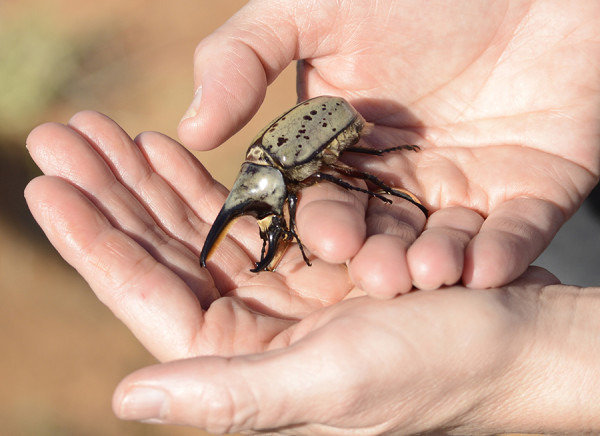Diana Thater
dal 7/1/2015 al 20/2/2015
Segnalato da
7/1/2015
Diana Thater
David Zwirner, New York
Science, Fiction. Through a combination of the temporal qualities of video and the architectural dimension of its physical installation, Thater's work explores the artifice of its own production and its capacity to construct perception and shape the way we think about the world through its image.

David Zwirner is pleased to present an exhibition of new work by Diana Thater, on view at 533 West 19th Street in New York. Shown here for the first time will be a new type of installation by the artist involving an enclosed video projection, ceiling screen, and light, as well as two new video walls.
Thater is one of the most important video artists working today. Since the early 1990s, she has created a wide range of film, video, and installation-based works whose sculptural forms engage spatial perception in physical, as well as conceptual, terms. Her pioneering oeuvre was among the first to push the boundaries of how new media art is displayed, helping to cement its position in the art world.
Through a combination of the temporal qualities of video and the architectural dimension of its physical installation, Thater’s work explores the artifice of its own production and its capacity to construct perception and shape the way we think about the world through its image. Natural diversity, wildlife, and conservation have been persistent themes in the artist’s work, and she has dedicated herself to an examination of the varied kinds of relationships humans have constructed with animals. While her in-depth studies of ecosystems and animal behavior propose observation as a kind of understanding in itself, her ethical position is implicit in the work, which, while subtly political, provides views of the sublime in all its incarnations—stunning, beautiful, and simultaneously terrifying.
In her new installation, which like the exhibition is titled Science, Fiction, Thater focuses on the dung beetle and the intricate navigation system it deploys in disposing balls of animal excrement, its main source of nutrition. Recent studies have revealed that the species uses the Milky Way to orientate itself at night, currently the only insect known to do so. In an experiment in which the beetles were placed on an outdoor table, they were only able to navigate in their usual straight line with an open view of the nocturnal sky—when their overhead vision was blocked, their movements became erratic and slowed drastically. The same experiment was repeated inside a planetarium, alternately turning the Milky Way on and off, and the animals’ path was demonstratively straighter and faster in light of the galaxy.
Thater superimposes her footage of the beetles with views of the Milky Way, creating a double video projection that is at once abstract and particular—the sophistication of the small insects’ navigation systems becomes compounded with the infinite complexities of the universe in a meditative fusion of macro and micro realms. Deploying a new type of installation, Thater presents the footage on a screen attached to the ceiling, projected from within a closed-off, freestanding box. Mirroring the setup of the scientific experiment with the dung beetles, its walls are lit from below, creating the illusion of levitation.
Also on view are two video walls showing the Milky Way, respectively titled Time Lapse One and Time Lapse Two. Thater shot the galaxy at Griffith Observatory in Los Angeles, positioning her camera beneath the Zeiss star projector. Lit in a bright blue light, the latter resembles a spaceship on a celestial mission and similar models are used to train astronauts how to navigate in space. It further creates a visual connection to the dung beetle and its dependence on the night sky. As the views of cosmic constellations become increasingly difficult to find outside of the confines of a planetarium—due to the rapid expansion of urban areas and the resulting light pollution—Thater’s exhibition also contains an underlying message about the future continuation of the insects’ time-old behavior. By effectively disposing of other animals’ feces, dung beetles are vital in maintaining healthy soil, and disruption to their nocturnal navigation patterns may have consequences that go far beyond their own existence and could affect agriculture in large parts of the world. The “disappearance” of the Milky Way and other astronomical sights, and the inverse introduction of artificial light at night, also impact the natural body cycles of humans, and threaten the subsistence of a distinctive and profound type of visual experience in the process.
Image: Photo by T. Kelly Mason, 2014
Press Contact:
Kim Donica +1 212 727 2070 kim@davidzwirner.com
Opening: Thursday, January 8, 6 – 8 PM
David Zwirner
519, 525 & 533 West 19th Street
New York, NY 10011
Tue - Sat 10am to 6pm



